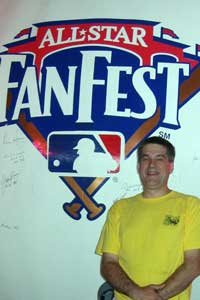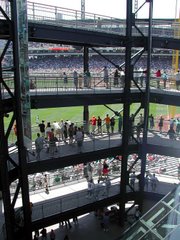In the "Now I know I'm getting old" department ... this is the 35th major-league season the designated hitter has been in use. I remember when they came up with the idea thinking it was too bizarre to last for long and that it would disappear within a few years.
Obviously, I'm not much for predictions.
The DH came about because, as stated in The New York Times at the time of its adoption prior to the 1973 season: "(T)he American League, under heavy financial pressure, kept campaigning for innovations. Only three teams in the American League passed the million mark in attendance last season; only three teams in the National League did not."
So, there you have it. Money talks. And it talked loud enough for then-commissioner Bowie Kuhn to break the stalemate between the two leagues over the issue and let the AL have its way.
As far as predictions, some of those noted in the Times regarding the designated hitter haven't worked out as expected with three-and-a-half decades of hindsight:
• When the DH was used as an experiment in the International League in 1969, games became shorter. "The reason for that was no surprise to the fan or television viewer: Changing pitchers is the most time-consuming maneuver in baseball."
The assumption at the time, which actually did hold true for several years, was that without having to be pulled for pinch-hitters, starting pitchers would be able to throw more complete games. Of course, the complete game has become almost extinct in the 21st century, and frequent pitching changes have tacked on quite a bit of time to the average contest.
• The extra legitimate batter in the lineup was supposed to increase offense, which did happen in the American League. But not everyone was sold. Chuck Tanner, then managing the White Sox, was quoted as saying:
"I don't think it will necessarily cause more scoring. In fact, it may cut down scoring on one side if the other team leaves a pitcher like Nolan Ryan in the game."
Again, the assumption was that pitchers would finish what they started.
• Finally, also along those lines, the number of pitchers carried by a team was expected to drop from about 10 or 11 to seven or eight, "now that the manager can use a pinch-hitter without losing his pitcher."
These days, teams carry seven or eight relief pitchers; in fact, when the Pirates made a recent trip to Yankee Stadium, where they'd be using the DH, Pittsburgh shuffled its roster to take 13 pitchers along, with just 12 players on offense. (The Pirates were swept in three games, anyway.)
The National and American leagues once were completely separate and competing entitites. Today, they're under the same umbrella almost completely, with only one glaring exception:
The designated hitter.
But after 35 years, it looks like it's going to be that way until the sport fades away, no matter what we "traditionalists" hope might happen.
Monday, June 18, 2007
Subscribe to:
Post Comments (Atom)









No comments:
Post a Comment